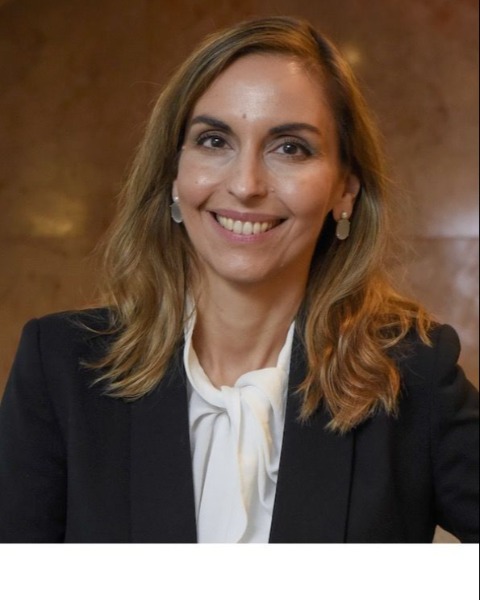Treatment of Relapsed/Refractory Myeloma
Poster Session 2
P-235: Clinical and sociodemographic characterization of multiple myeloma patients with symptomatic relapse and/or refractory disease under treatment in Portugal: an observational, multicenter study
Thursday, September 28, 2023
12:30 PM - 1:30 PM EEST

Catarina Geraldes, MD PhD (she/her/hers)
Head of Clinical Hematology Service
Centro Hospitalar e Universitário de Coimbra
Coimbra, Coimbra, Portugal
Introduction: Multiple Myeloma (MM) is an incurable plasma cell neoplasm associated with high mortality and morbidity. Regardless of the remarkable advances in the last decade, more effective, well-tolerated therapies and personalized strategies are needed, especially in the setting of relapsed/refractory MM (RRMM). The CharisMMa-Portugal is the first study in Portugal aiming to describe RRMM patients’(pts) characteristics and management.
Methods: This was an observational, cross-sectional, multicenter study on RRMM pts routinely treated at 7 public hospitals in Portugal. The study enrolled RRMM pts diagnosed in the previous 5 years presenting with RRMM in the 6 months prior to data collection. Data were collected from medical records during the clinical appointments (2020-2022). Sociodemographic, diagnosis-related information, clinical characterization of the last RR episode as well as treatment details since diagnosis were collected. Pts provided their written informed consent (ClincialTrials.gov ID - NCT04135963).
Results: Out of the 74 pts screened, 62 were analyzed. Most pts (55%) were male, median age at diagnosis was 65 (IQR: 57-71) years. Nearly 68% were urban residents and the median home-to-hospital distance was 24.5 km (IQR:10-50). Most pts had completed at least the 9th school grade (65.5%) and were retired (62.3%). International Staging System (ISS) stages II and III (37.1% and 40.3%, respectively), and ECOG-PS 0 and ECOG-PS 1 (37.3% each) were the most common.
Triplet regimens were used as the first treatment after diagnosis in 69.4% of the pts. The preferred route of administration was the combination of oral plus subcutaneous (78.9%), and 30.6% received a prior stem cell transplant.
At the last RRMM episode, nearly 63% of pts had at least one comorbidity. Eleven of 24 (45.8%) pts presented cytogenetic abnormalities, of which 8 were high risk and three were not classified.. At the last RRMM episode, 75% of pts initiated second-line treatment, 23.2% third-line and 1.8% fourth-line. Triplets were the most common (67.1%), while oral plus subcutaneous (39.6%) and all-oral (32.1%) were the most frequent routes of administration. Overall, proteasome inhibitors (PIs) and immunomodulators (IMIDs) were prevalent in most treatment combinations (PIs = 26.8%, IMIDs = 37,5%, PI+IMIDs = 17,9%). At last relapse, median number of visits to the hospital were four, while 51.6% of pts required a CT scan and 32.3% an MRI.
Conclusions: This study provides a comprehensive picture of the current real world landscape of RRMM in Portugal. The treatment patterns described reveal the complexity of treating the refractory stages of the disease with several previous treatment lines. The socio-demographic and clinical characterization of these pts as well as the healthcare resource utilization in this setting can inform stakeholders’ decision making on optimizing health policies.
Methods: This was an observational, cross-sectional, multicenter study on RRMM pts routinely treated at 7 public hospitals in Portugal. The study enrolled RRMM pts diagnosed in the previous 5 years presenting with RRMM in the 6 months prior to data collection. Data were collected from medical records during the clinical appointments (2020-2022). Sociodemographic, diagnosis-related information, clinical characterization of the last RR episode as well as treatment details since diagnosis were collected. Pts provided their written informed consent (ClincialTrials.gov ID - NCT04135963).
Results: Out of the 74 pts screened, 62 were analyzed. Most pts (55%) were male, median age at diagnosis was 65 (IQR: 57-71) years. Nearly 68% were urban residents and the median home-to-hospital distance was 24.5 km (IQR:10-50). Most pts had completed at least the 9th school grade (65.5%) and were retired (62.3%). International Staging System (ISS) stages II and III (37.1% and 40.3%, respectively), and ECOG-PS 0 and ECOG-PS 1 (37.3% each) were the most common.
Triplet regimens were used as the first treatment after diagnosis in 69.4% of the pts. The preferred route of administration was the combination of oral plus subcutaneous (78.9%), and 30.6% received a prior stem cell transplant.
At the last RRMM episode, nearly 63% of pts had at least one comorbidity. Eleven of 24 (45.8%) pts presented cytogenetic abnormalities, of which 8 were high risk and three were not classified.. At the last RRMM episode, 75% of pts initiated second-line treatment, 23.2% third-line and 1.8% fourth-line. Triplets were the most common (67.1%), while oral plus subcutaneous (39.6%) and all-oral (32.1%) were the most frequent routes of administration. Overall, proteasome inhibitors (PIs) and immunomodulators (IMIDs) were prevalent in most treatment combinations (PIs = 26.8%, IMIDs = 37,5%, PI+IMIDs = 17,9%). At last relapse, median number of visits to the hospital were four, while 51.6% of pts required a CT scan and 32.3% an MRI.
Conclusions: This study provides a comprehensive picture of the current real world landscape of RRMM in Portugal. The treatment patterns described reveal the complexity of treating the refractory stages of the disease with several previous treatment lines. The socio-demographic and clinical characterization of these pts as well as the healthcare resource utilization in this setting can inform stakeholders’ decision making on optimizing health policies.
